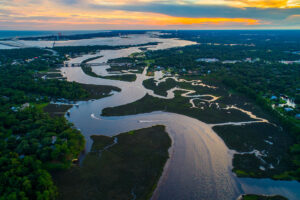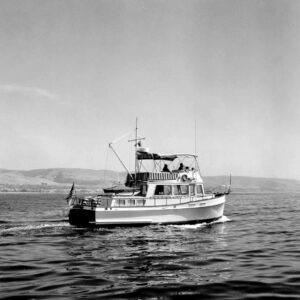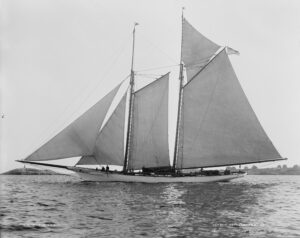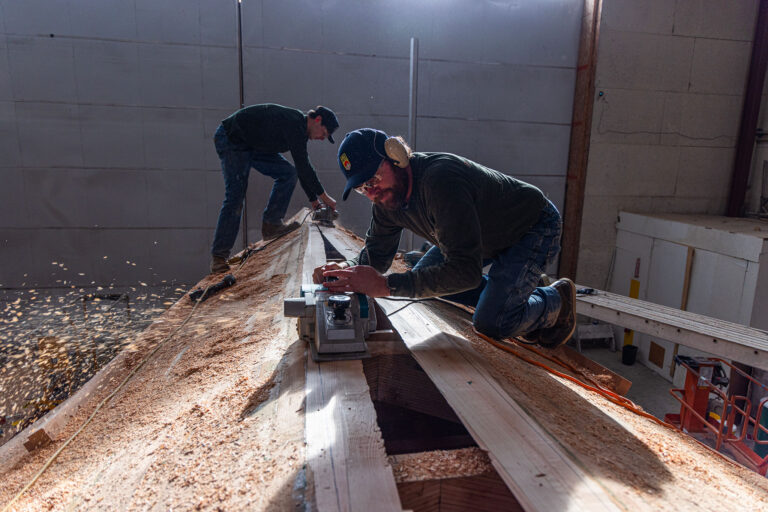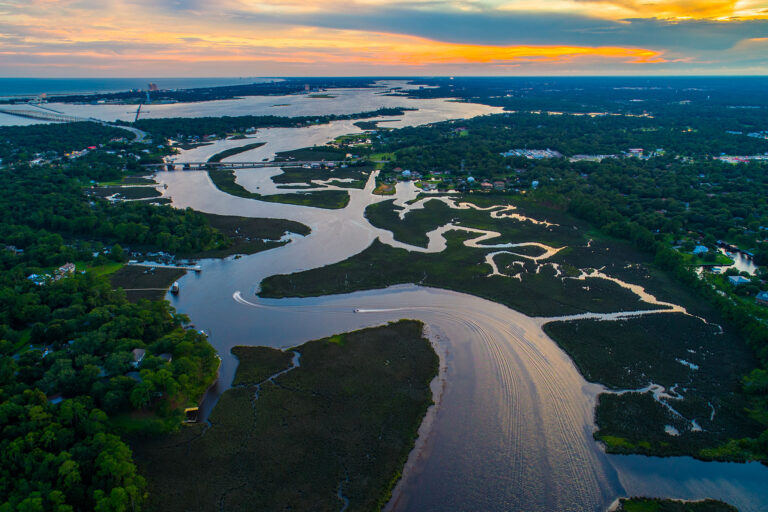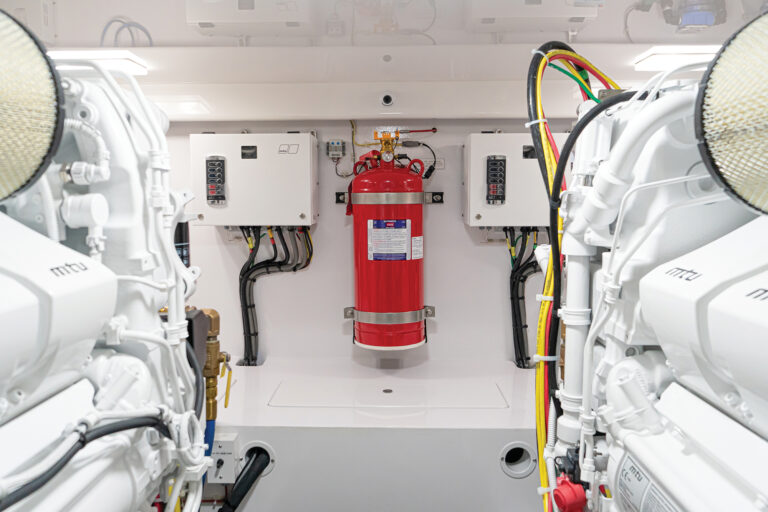
In this piece titled “East River Manhattan, 1655” by artist Leonard Tantillo, the East River is abuzz with shipping commerce. As cargo is offloaded onto smaller vessels from the large fluyt displaying the Dutch flag, the ferry to the left shuttles passengers across the river from Brooklyn to Manhattan, which is still a Dutch town called New Amsterdam. To the far left in the background is the government building for the Dutch West India Company, which also served as the residence for Petrus Stuyvesant, the last director-general of the colony of New Netherland before it was ceded to the English in 1664. Behind the fluyt to the direct left is the Dutch church, and pictured in the distant background to the left of the ferry is a windmill located on the Hudson River, then called the North River.
Tantillo has been depicting 17th-century New York for 40 years. “A lot of it is based on a very detailed map that was drawn by a Belgian cartographer in the late 1600s,” he says of this painting.
Tantillo holds an architectural degree from the Rhode Island School of Design, and he uses his training to create three-dimensional digital models of early Manhattan based on cartographic data. Then, he analyzes the digital map to decide which section of the city he would like to depict. “I like painting places that were never photographed.”
His fascination with the history of New York stems from his upbringing in New Paltz, a town with many stone houses from the late 17th century and early 18th century. “You couldn’t come from that town without being aware of the past,” he says. He gravitates towards maritime scenes, in part, because his grandfather was a sailor from Procida, Italy, who owned a small merchant vessel.
Tantillo, who is now 75, still resides in New York. He is a resident of Rensselaer County and continues to focus his art on his home state. “After 40 years of working on this subject matter, I’ve never grown tired of it,” he says. “It’s endlessly fascinating, and each new project introduces me to a new aspect of early life in New York.”
This article was originally published in the June 2022 issue.


